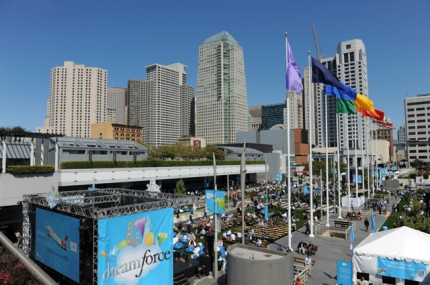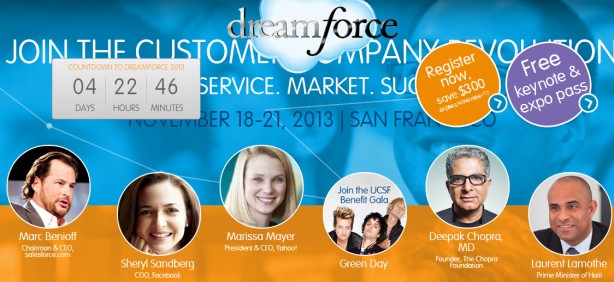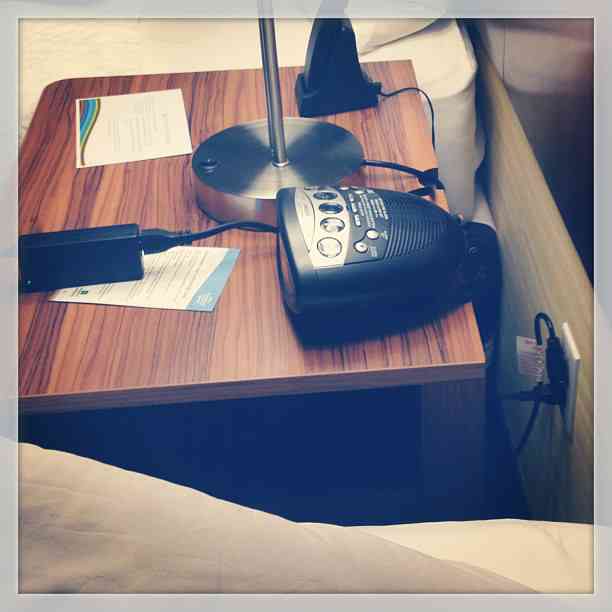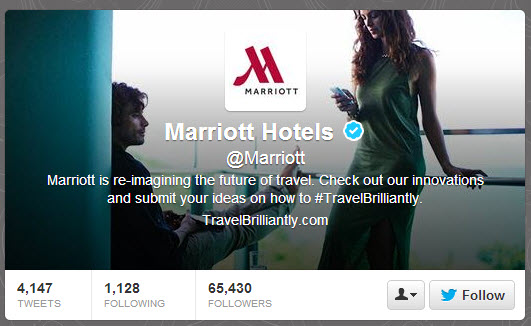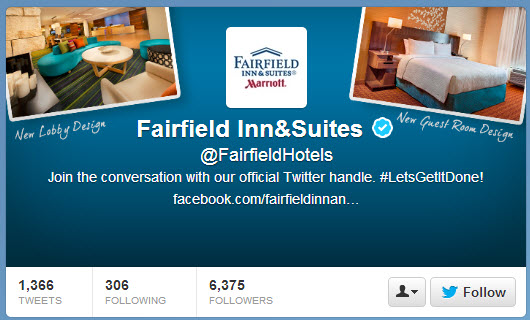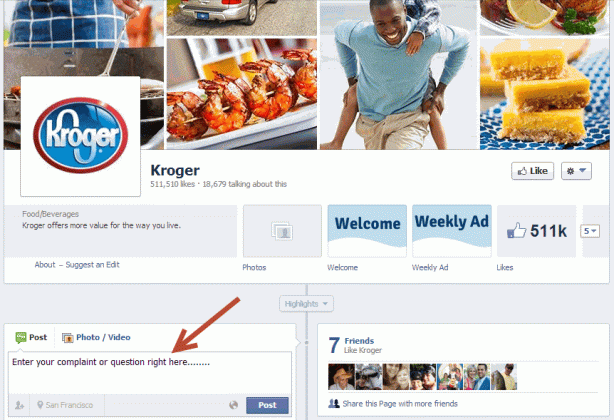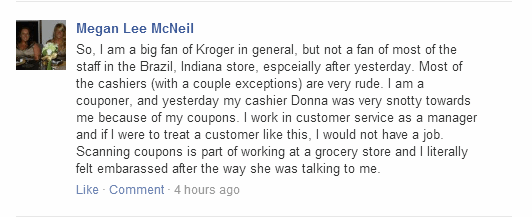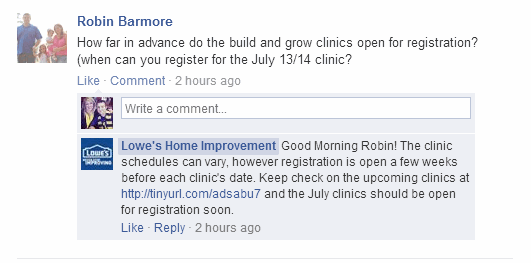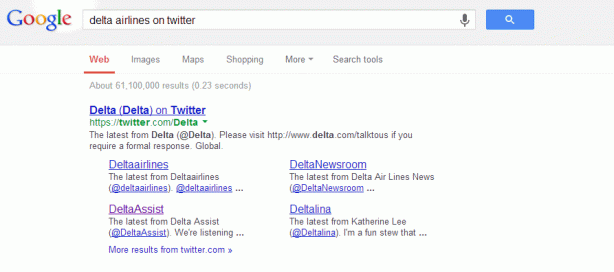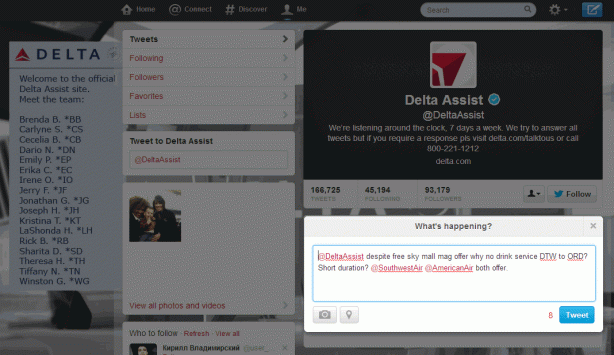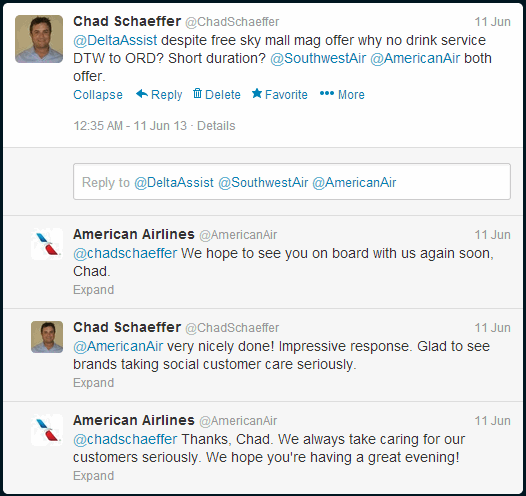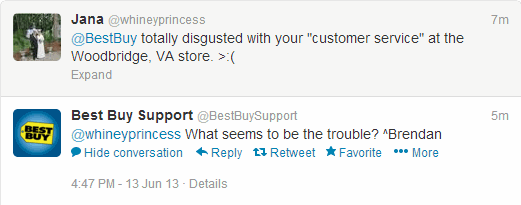 I have the best job in the world. I get to do what I truly love which is help clients improve their social customer service programs. I’ve been fortunate to be in this small but growing niche for almost 5 years now after spending 9 years helping some of the largest global contact centers provide a world-class customer experience to their consumers. After all these years the questions I get asked most is very similar across all the industries I’m fortunate to work in.
I have the best job in the world. I get to do what I truly love which is help clients improve their social customer service programs. I’ve been fortunate to be in this small but growing niche for almost 5 years now after spending 9 years helping some of the largest global contact centers provide a world-class customer experience to their consumers. After all these years the questions I get asked most is very similar across all the industries I’m fortunate to work in.
How do I measure the value of social care?
What metrics and KPI’s should I track?
What is the ROI of social care?
These questions of course are answered by the reporting you have in place to analyze and optimize social customer service performance. I thought you might find it helpful if I shared a quick list based on my experience on the reports I found most valuable. I’m sure I’ve missed many that you are using today, please share them in the comments section so others can learn from what is working for you!
Enjoy.
#1 – Inbound Volume by Day
Response time is a critical metric and the best way to reduce it is to make sure you are staffed when your consumers are posting to social networks. I had a client whose volume only went down 20% on the weekend but was only staffing Monday through Friday. They used an inbound volume report by day to secure investment for weekend resources.
#2 – Inbound Volume by Hour
Similar to the report above, it’s also important to know when during the day consumers are posting. Again, to optimize response time, agents should be staffed to mimic the highest volume periods of the day. A previous client staffed 8-5pm EST but after analyzing inbound volume by hour realized 5-10pm EST was the highest volume posting time. This actionable data gave them the proof they needed to create a second shift of agents and stagger them across the day to reduce response time.
#3 – Response Time
At first glance this metric seems straight forward. Simply, how long does it take to respond to consumers posting in social media? However, most clients don’t want the time they aren’t monitoring social sites to count against them. (i.e. If consumer posts on 5pm on Friday and response is sent 10am Monday, the response time is only a few hours, not a few days since there is no weekend coverage). There is only one metric for response time, that is customer time, the customer doesn’t care when you monitor or not, it does not improve your service to play games with the numbers. Second complexity is many social posts require multiple back and forth engagements before the case is closed, so is response time from the first engagement or when the case is closed? I’d argue its important to report on both so see #4.
#4 – Case Close Time
With Response Time we learned its critical to track how long it takes to provide that initial response to a consumer’s social media post. Case Close Time tracks the total time it takes to close a post or case. It’s ok to follow-up and have some back and forth with a consumer to resolve their issue, but it doesn’t do any good to respond quickly on the first engagement only to frustrate the consumer because it takes a day or two to ultimately close out their case.
#5 – Customer Satisfaction or Net Promoter Score
In Twitter I recommend sending a follow-up tweet immediately after closing out a social post that says, “On a scale of 0-10, 10 being very likely, how likely are you to recommend our social customer service?” If you have cell numbers for your consumers and have the ability to send short text/SMS surveys, that is a good option as well. (i.e. Rate your social customer service experience 1-5 by texting 1-5 to 12345. AT&T is using this method.
#6 – Total Volume Trended Over Time
It’s not atypical to see social care volume growth rates increasing 50% a year as more and more consumers adopt social as a support channel. With growth rates that significant it requires contact center managers to constantly evaluate their staffing and hiring approach. Perhaps traditional channels like email and phone are decreasing over time and that pool of agents can be allocated to the social channel.
#7 – Likes, Shares, Favorites, Retweets
These metrics are typically used by social marketers to measure the success of social content published on Facebook and Twitter. However, they are also great service metrics to show the value of responses coming directly from social customer service agents. If consumers appreciate your responses and see them as helpful they will positively share it with a like or RT.
#8 – Top Issues, Questions, Praise
The most successful contact centers have always taken the goldmine of feedback from the voice of the customer and shared that actionable data back across the enterprise so products and services can be improved. Social is no different and is probably even more critical because social word of mouth is so much more powerful than the phone, email and chat channels. For example, every month product management should be receiving reports on the top 10 complaints, questions and praise consumers have posted on social networks. Trending these metrics over time, comparing them to previous time periods and percent change are also elements to be considered for these type of reports.
#9 – Open Case Visibility
When cases are open, that means a customer is waiting. It’s critical to have a report view into how many open cases, case age, agent assigned and type of case to make sure open case volume is proactively managed.
#10 – Volume by Social Site
It’s important to break down inbound volume by Twitter, Facebook, Google +, etc. Typically agents are assigned to queues or sites so understanding the volume can help align the right coverage for each social channel.
#11 – Reporting by Tags/Labels
Especially with Twitter and its 140 characters, it can be tough to get enough actionable data from a tweet to share with the rest of the organization. However, most social listening and contact tools provide the ability to add tags or additional labels to social interactions which you can then report on. For example, adding specific product or brand names, location info if you are a retailer or restaurant, perhaps adding severity level to a post to understand the frequency of high priority issues.
#12 – Reporting by Influencers
All consumers deserve your best service, however, we can’t ignore the impact of influencers in social media. Because of that, its important to be able to filter almost all of the above reports by posts from influencers. Top complaints from influencers, response time for influencers, open cases by influencers, NPS/CSAT by influencers are all valuable in looking at how your social care is impacted by Klout scores and follower counts.
#13 – Cross Channel Reporting
Social is just one piece of the overall consumer support experience. Although rapidly growing, for most companies social is still less than 5% of overall support volume compared to phone and email. However, leading contact centers are integrating social into their CRM tool so they can report on not just social metrics but also cross-channel key performance indicators. For example, top issues by channel, cost per contact per channel, CSAT by channel and agent productivity by channel. To be clear, by channel I mean phone, email, chat, self service, communities and social.
#14 – Engagement Rate
In my experience clients can get too wrapped up in reviewing social posts and deciding if its technically a support post or if a post requires action. The bottom line is the consumer took the time to post something on one of your social properties, don’t they deserve a response? Isn’t friendly engagement one of the ways you build better community and a stronger presence on Facebook and Twitter? I think so and that is why I think its important to measure the total amount of posts you receive and divide it by the total number of engagements or responses to get your engagement rate. This is especially important for Twitter handles dedicated to support.
#15 – Social Profiles Captured
One of the single toughest challenges facing the social customer service community is understanding if @ChadSchaeffer on Twitter is the Chad Schaeffer in Plymouth, MI with a phone number and email address in a CRM database. Linking social id’s with traditional customer info is required for the 360 view of the customer so many marketers and service professionals aspire to. Consequently, measuring how many social profiles are being added and combined in your CRM system is a new metric I think leading professionals will begin to track and communicate.
#16 – Social Resolution Rate
A new personal favorite of mine is measuring the rate you are able to resolve a consumer’s issue within the social media channel. Too many times I’m seeing brands respond with “call us at 1-800 or email us by clicking this link”. If consumers wanted to use the phone or email to contact you they would have chosen those channels in the first place. I also don’t buy the all too convenient response of ‘we don’t want to discuss issues over social’, private messaging is available in both Twitter and Facebook to conveniently resolve consumer issues more discretely. Fundamentally, consumers are choosing social support channels because they require less effort than filling out a long email form or waiting on hold and fumbling through an IVR.
#17 – Productivity
The reason I saved productivity for last is because it’s the least important social care metric. I think the industry is learning over time that quality is always better than speed when it comes to measuring customer satisfaction. Zappos has publicly stated they don’t even measure handle time anymore for any service channel. Average time on case and average cases closed per day by agent should only be used as a coaching tool or directional guide. You might even find the agents with higher handle times also have higher CSAT or NPS scores!














